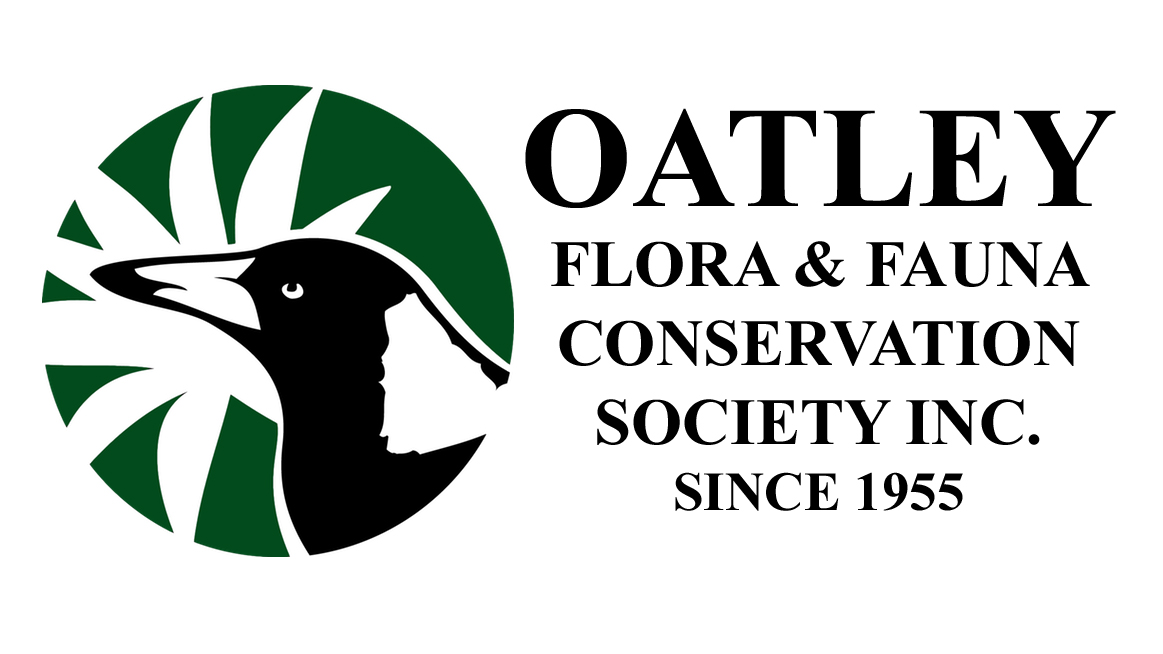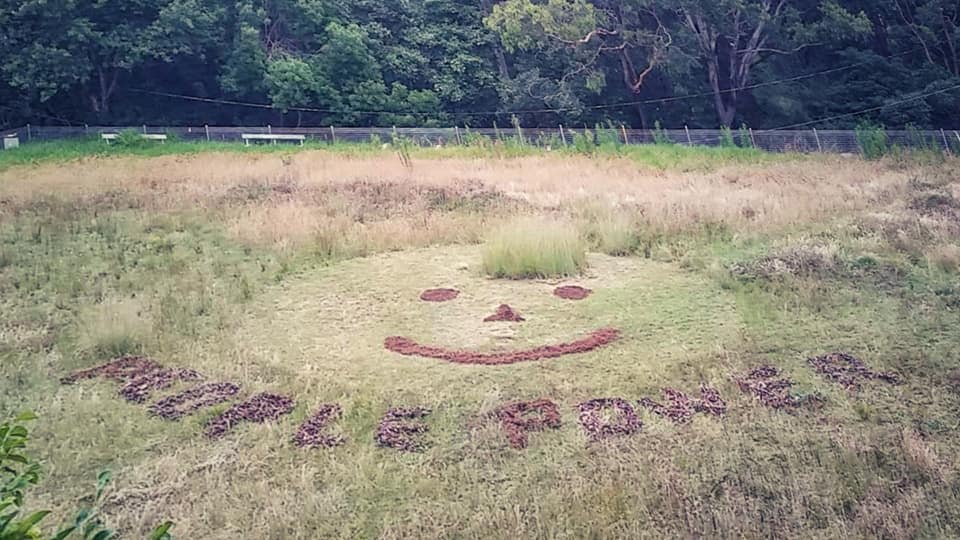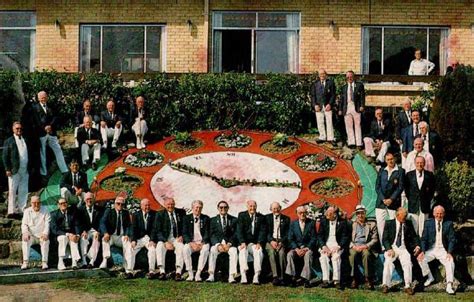
Oatley Bowling and Recreation Club held its first meeting in December 1959 and was incorporated in 1960 with 200 Ordinary Members and 100 Associated Lady members with members from both sides of Oatley. The first clubhouse was built in 1962. Finance had been arranged through the Commonwealth Trading Bank and members also invested their own money to pay for the construction of the greens and clubhouse.
By 1972 the second club house was built with funds raised by community members as the club prospered. It was the center of the social life of the suburb.

The new millennium saw the decline in membership in clubs across Australia . The Oatley Bowlng club ceased trading in 2003. The Oatley Sports Club leased the building and operated until May 2005. Between 2005 – 2007 various community groups approached Hurstville City Council (HCC) to use building and grounds for soccer, bands, meeting rooms, yoga and storage.
2006 September HCC resolved to undertake a $70,000 feasibility study to investigate selling the site for approx $3 million.
2007 March a petition was presented to Hurstville City Council with 435 signatures requesting that the site remain zoned open space and available for community use.
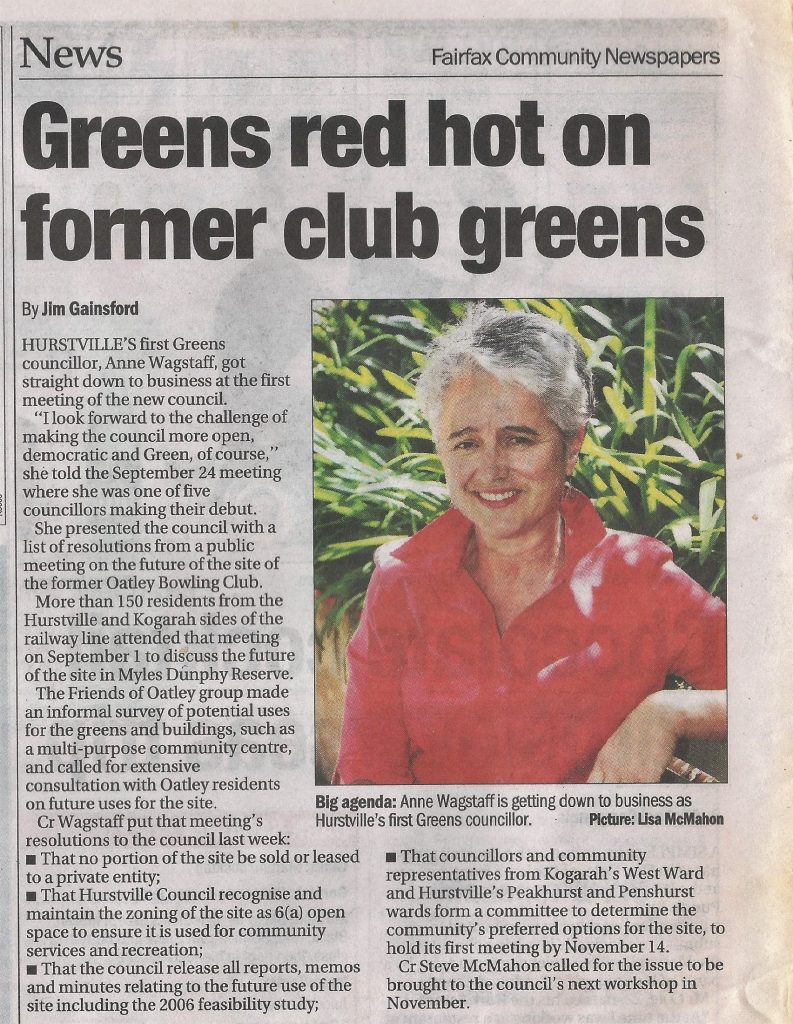
Public Meeting at Oatley RSL 1 September 2008
More than 150 people attended the residents’ forum held to discuss the future of the site. A history of the site and examples of community uses was presented by Friends of Oatley members. An informal survey was made of uses for the bowling greens and buildings The meeting was addressed by community groups – Lions Club, Oatley Flora & Fauna and Mortdale Community Centre. Ten prospective Local Government Councillors from Hurstville and Kogarah Council outlined their views of what may be appropriate for the site. Several residents from Oatley and Kogarah also addressed the meeting.
The overall sentiment of the meeting was that it should remain public land for public use. A resolution was passed at this meeting calling for a joint working party consisting of Councillors and community representatives from both councils to work towards a community facility on the site. Check out www.friendsofoatley.com
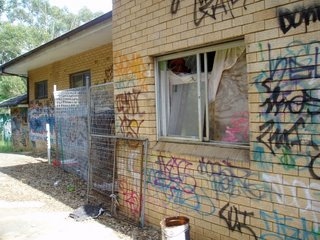
Resolutions from the public meeting were:
- No portion of the former Oatley Bowling & Recreation Club site should be sold or leased to a private entity.
- Hurstville City Council recognise and maintain the zoning of the site as 6(a) – Open Space thereby ensuring the site is used for the provision of community services and recreation.
- Hurstville City Council immediately release any and all reports, memos and minutes relating to the future use of the site. This will include but is not limited to the Feasibility Study instigated in 2006.
- Councillors and community representatives from Kogarah’s West Ward and Hurstville’s Peakhurst and Penshurst Wards form a Joint Working Committee to determine the community’s preferred options for the site.
- The Joint Working Committee hold its first community consultation meeting by Friday 14 November 2008.
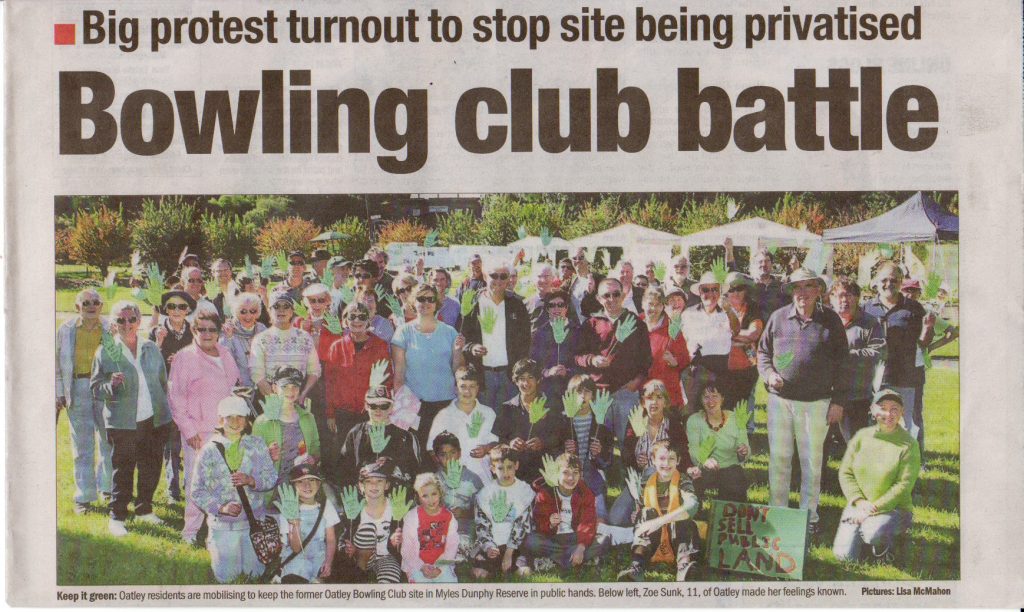
8 June 2009 – Information Day and BBQ organised by community members attended by over 250 people.
24 June 2009 – A petition in support of the option of restoring the building for community use was signed by 267 community members on the weekend and was presented to Hurstville Council by Councillor Anne Wagstaff.
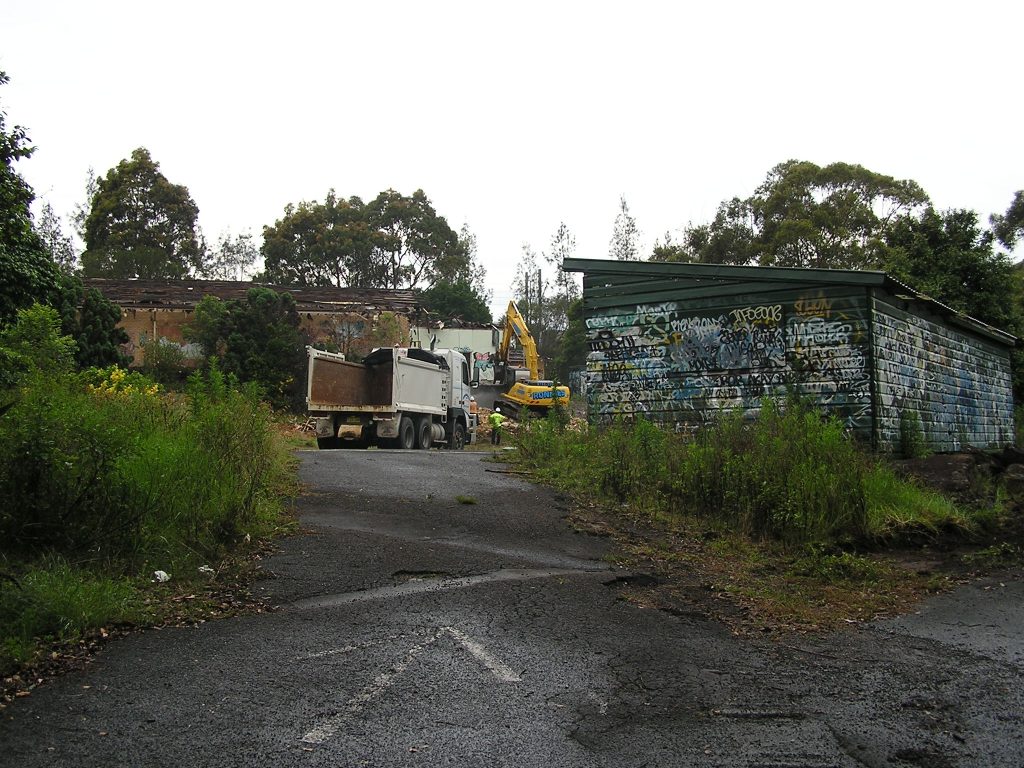
22 September 2010 – Council submitted a rezoning and reclassification submission for the former Oatley Bowling Club site for the purpose of making the site available for development as seniors housing.
27 July 2011 – Hurstville Council resolved to demolish the Oatley Bowling Club five years after the club closed. Friends of Oatley (FOO) and various community groups requested use of the building and grounds but Council ignored those requests. Use of the building and site would have provided some measure of security and some level of maintenance of the site would have been undertaken halting further deterioration. A building built by community funds, neglected by Hurstville Council was demolished at the rate payer’s expense on 22 November 2011.

From 2014 onwards Council pursued developing the site as “Aged Care Vertical Village”
Popup picnic on site on 21August 2016 and Photos by Chris Reberg of Myles Dunphy Reserve
2016 July – Residents continue to lobby for the site to remain zoned open space, to be used for passive recreational activities. Facebook sites and media used to promote the campaign. Myles Dunphy Backyard Facebook site gathers followers and interest from young families interested in using the site.
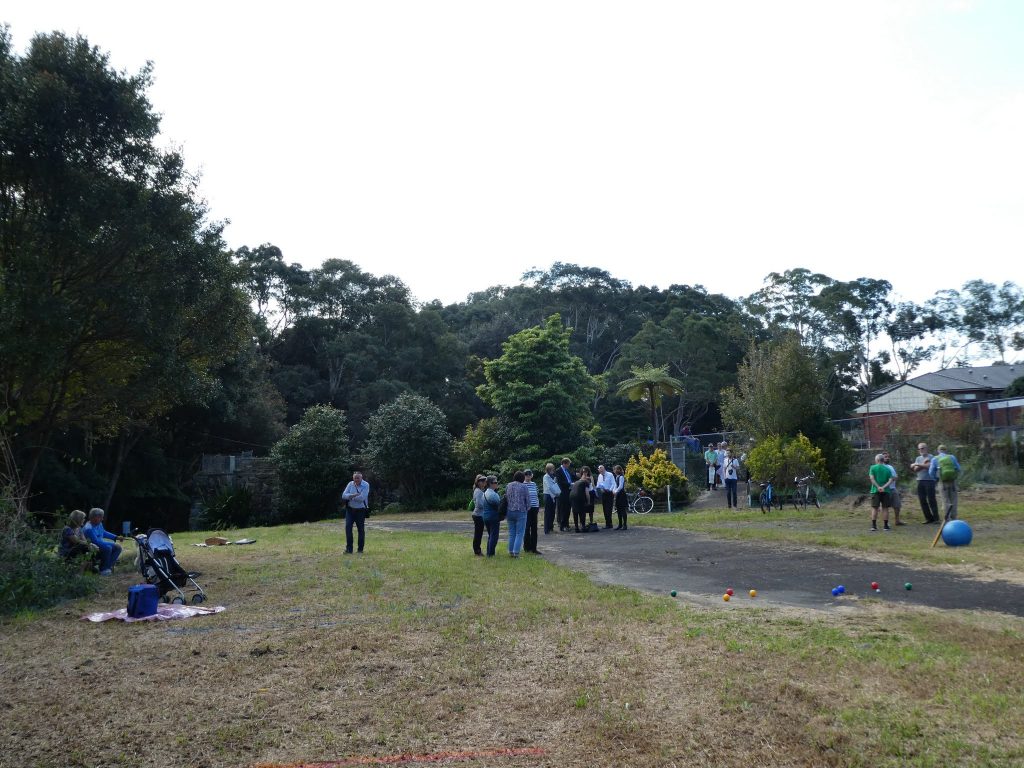
8 September 2016 – The Independent Hearing Assessment Panel (IHAP)
A site visit for the panel was well attended with residents on hand to answer questions by the panel. Seven residents spoke at council chambers against the D/A consolidate lots and adjust boundaries for development . Residents were disappointed that the Independent Hearing Assessment Panel voted unanimously to approve the D/A to consolidate parcels of land within Myles Dunphy Reserve.
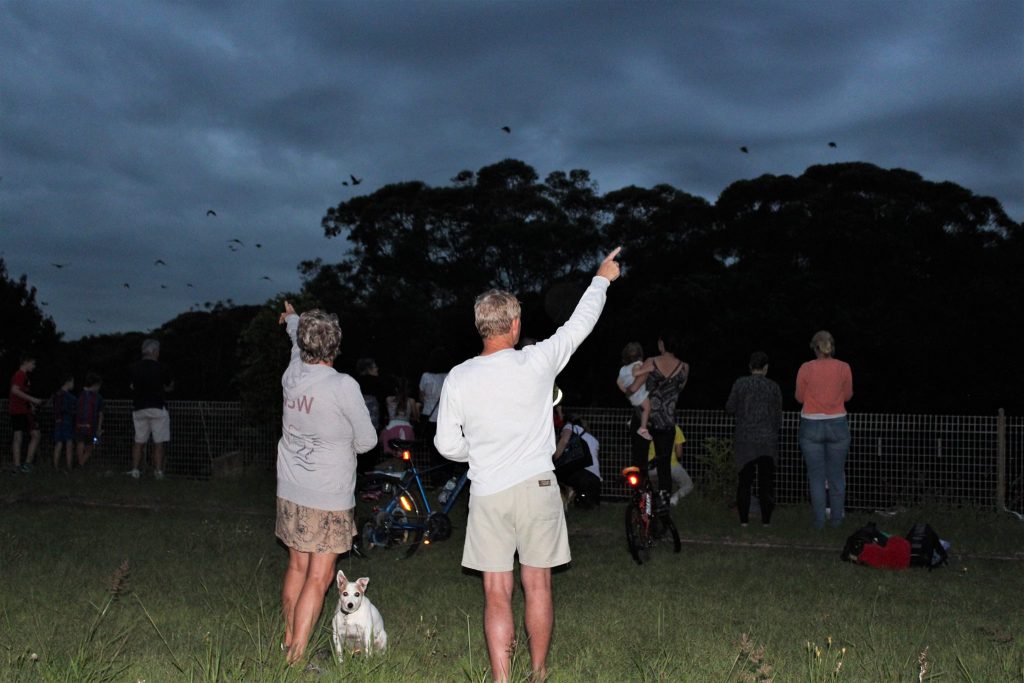
1 May 2017 – A report is presented to Georges River Council on the preliminary public exhibition phase of the Planning Proposal. The report by Elton Consulting (14 March) with results from three community information sessions, a community survey, telephone survey and 52 submissions from November 2016 was presented to the IHAP meeting. It was felt that surveys were biased promoting aged care or seniors housing over other uses such as re-vegetation, community gardens or education centre.
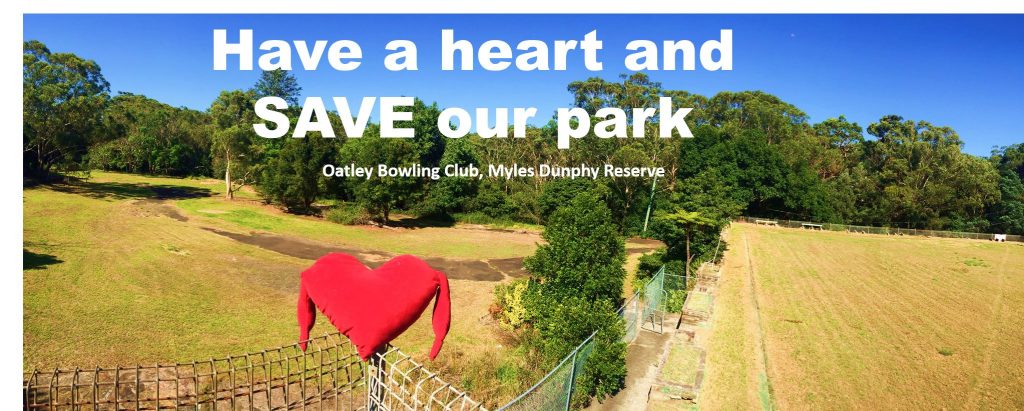
2017 & 2018
- Residents continue to lobby for the site to remain zoned open space, to be used for passive recreational activities. The Greater Sydney Commission’s draft plan stressed the importance of preserving and improving open space to cater for the increasing population.
- Oatley Flora and Fauna Society continued to make submissions on the importance of the reserve containing one of the last remaining Sydney Turpentine Ironbark forests, and value of the area as a haven for vulnerable species of flying fox and owls.
18 Feb 2018 – Sydney Morning Herald Plans to rezone land for seniors housing labelled environmental threat and a travesty

17 December 2018 – Council unanimously supported a Mayoral minute to keep the former Oatley Bowling club site for community use :
1) not proceed with the Planning Proposal to re-zone and reclassify the former Oatley Bowling Club site for seniors housing
2) that Council commence the preparation of a new Masterplan and a Plan of Management
3) That the GM immediately take all necessary steps to commence the de-contamination of the site (removal of asbestos) to enable its remediation for the purpose of facilitating public access and recreation
4) That the GM be authorised to seek grant funding and submit applications in support of the decontamination of the site and/or its future use for the purposes of open space and recreation
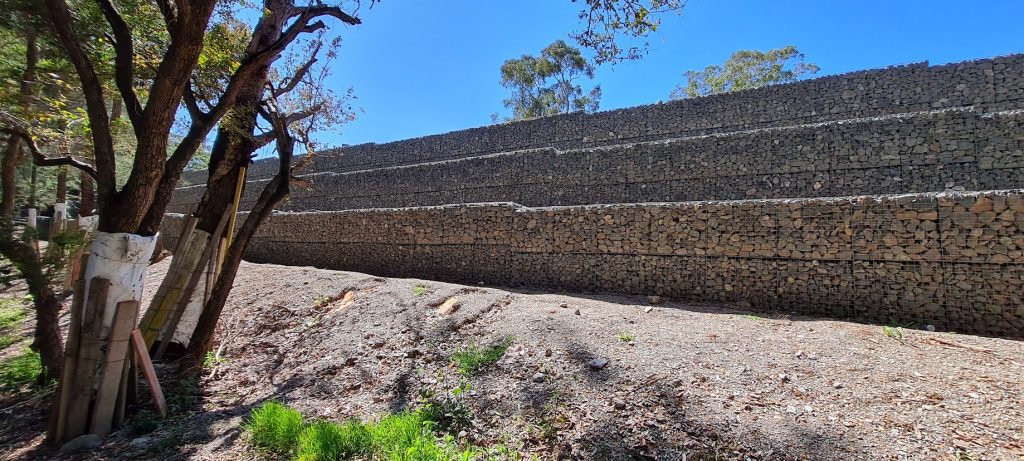
25 November 2020 – Council awarded the contract for site remediation works:
- Management of asbestos impacted material, including appropriate site establishment, controls, notifications, disposal/movement and certifications;
- Necessary excavation, disposal, dewatering and shoring to enable construction and reinstatements of the site;
- Import and reuse of material onsite to develop appropriate levels;
- Construction and landscaping of gabion retaining structures;
- Consolidation of the site to meet designated surface conditions and levels.
Work will commence in February 2021 with completion expected in August 2021. The site will be remediated to make the site suitable for future recreational and passive use.
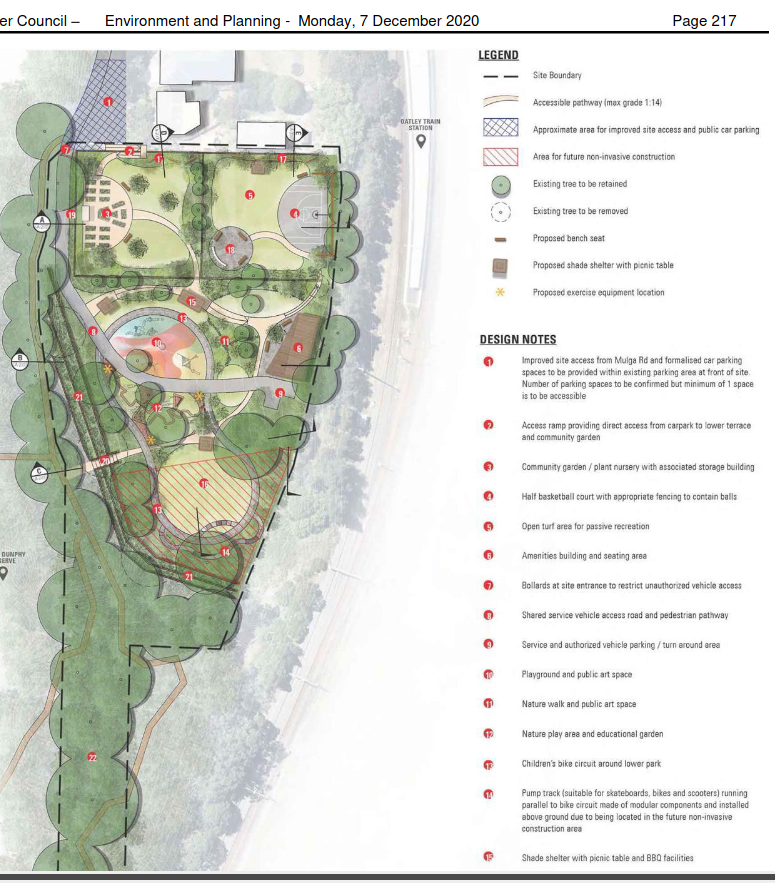
December 2020– Council endorsed the Draft Plan of Management to be placed on public exhibition. The draft Plan of Management and draft Master Plan for Former Oatley Bowling Club were on public exhibition in March 2021.
12 July 2021 – Re-categorisation of site & PoM – At the Environment and Planning Committee meeting the Plan of Management prepared by Cardio consultants (5 May 2021) was adopted. Link to PoM
The site was categorised from ‘Natural Area – Bushland’ to ‘Park’. The core objectives for management of community land categorised as a park are:
(a) to encourage, promote and facilitate recreational, cultural, social and educational pastimes and activities.
(b) to provide for passive recreational activities or pastimes and for the casual playing of games.
(c) to improve the land in such a way as to promote and facilitate its use to achieve the other core objectives for its management.
